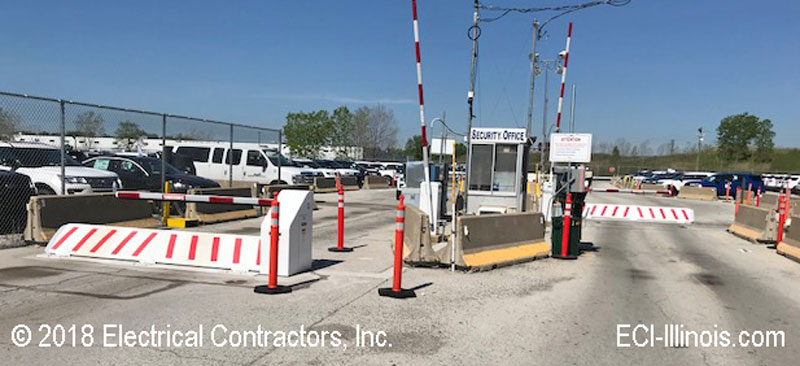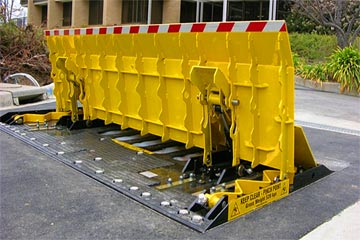3 Simple Techniques For Wedge Barriers
All About Wedge Barriers


18 might be done faster, conveniently, and expense successfully. FIG. In certain personifications, the support 30 might be a steel frame consisting of plates, beams(e. g., I-beams ), and/or other structures that are protected within the foundation 14, which might be concrete. At the surface 12, a top side 28 of the anchor 30 may be at the very least partially exposed
, therefore enabling the accessory of the obstacle 10 to the support 30. g., additional resources threaded holes)in several light beams or plates of the support 30 may be subjected to the surface area 12. In this fashion, bolts 32 or other mechanical fasteners may be made use of to safeguard the barrier 10 to the anchor 30. As the obstacle 10 is placed to the surface 12 of the foundation 14, collection of particles and various other product beneath the barrier may be minimized, and parts of the bather 10 might not be exposed to listed below quality settings. As shown by reference numeral 52, the lifting device 50 includes components disposed underneath the wedge plate 16. The elements 52 beneath the wedge plate 16 may include an electromechanical actuator, a webcam, one or more webcam surfaces, and so forth. Furthermore, the training device 50 consists of a springtime assembly 54
The spring rod 58 is coupled to a cam(e. g., cam 80 displayed in FIG. 4) of the lifting mechanism 50. The springtimes 60 disposed concerning the springtime pole 58 are kept in compression by spring supports 62, including a fixed spring assistance 64. That is, the set spring support 64 is fixed relative to the structure 14 and the remainder of the bather 10.
Wedge Barriers - Truths
g., spring assistance 65 )may be dealt with to the end of the springtime pole 58 to allow compression of the springtimes 60. As the springs 60 are compressed in between the spring supports 62, the springtime setting up 54 generates a pressure acting on the webcam coupled to the springtime pole 58 in an instructions 66. For instance, the remaining force put on
the camera to release the wedge plate 16 might be given by an electromechanical actuator 84 or other actuator. The springtime setting up 54 and the actuator 84(e. g., electromechanical actuator)might run with each other to translate the webcam and lift the wedge plate 16.
As discussed over, in the released setting, the wedge plate 16 offers to block accessibility or travel beyond the barrier 10. The obstacle 10(e. g., the wedge plate 16 )may obstruct pedestrians or automobiles from accessing a building or path. If a vehicle is taking you can try here a trip towards the deployed wedge plate 16(e. For instance, in one situation, the security legs 86 may be extended throughoutmaintenance of the barrier 10.